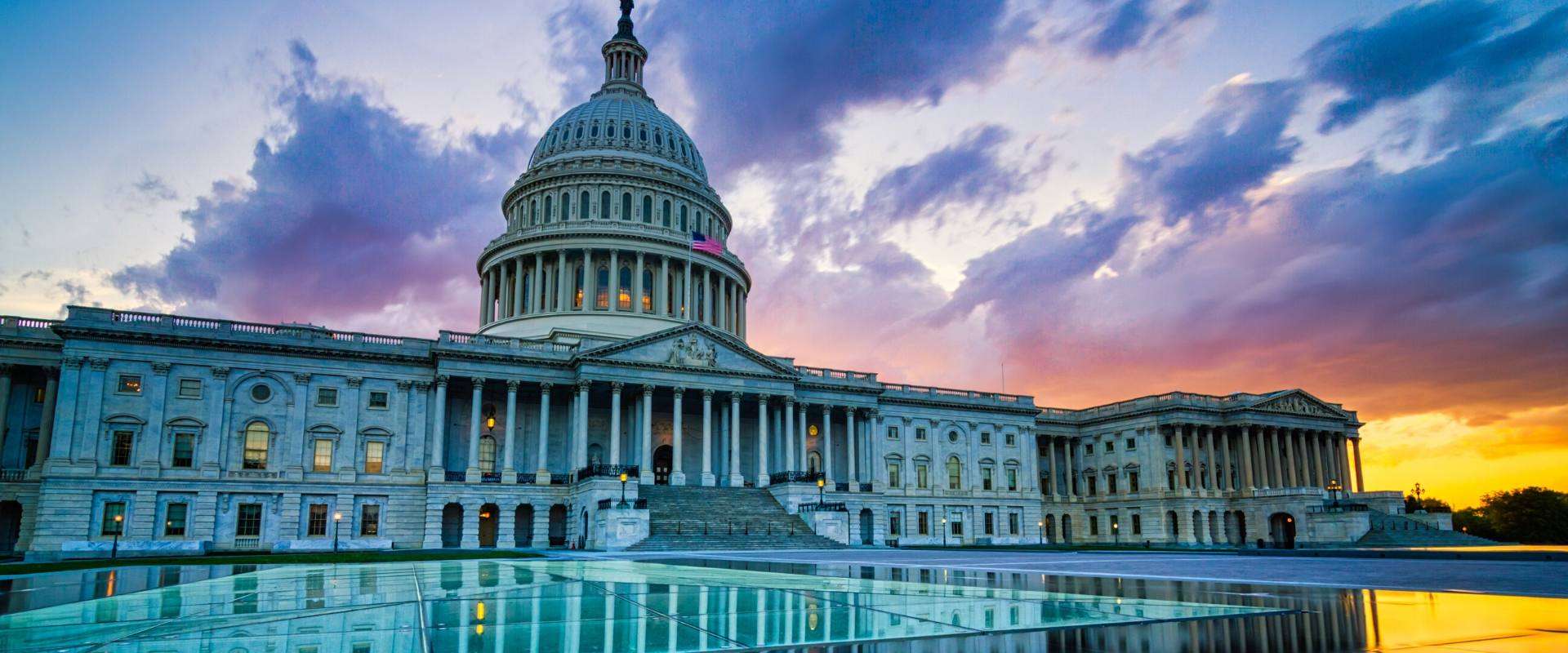What is the Difference Between the FFCRA and CARES Act?
How APS is Helping Businesses
We are keeping a close eye on the ever-changing landscape of COVID-19, including the FFCRA and CARES Act. Here’s how APS has responded so far and how we’re helping businesses during this challenging time:
- We have created a COVID-19 Response Team to assist in processing payroll, as well as making it easier for our clients to utilize the credits and deferrals the IRS has created.
- We have developed and released FFCRA and CARES Act tracking and management offerings. These new features eliminate the need for employers to manually track paid sick and family leave under the FFCRA, as well as Social Security payment deferrals under the CARES Act.
- We are currently developing additional system functionality to make it easier for employers to manage all the requirements under the FFCRA and CARES Act.
What is the FFCRA?
On March 18, 2020, the Families First Coronavirus Response Act (FFCRA) was passed to help provide paid leave to employees who are affected by COVID-19 related incidents from April 1, 2020, through December 31, 2020.
The FFCRA provides refundable tax credits for required employers to help with COVID-19 related payroll costs. It also mandates certain employers to provide sick pay and paid family leave to employees who are on leave or unable to work due to Coronavirus. Furthermore, it provides an emergency Family and Medical Leave (FMLA) extension and additional paid sick leave requirements.
For certain circumstances related to COVID-19, employees will be eligible for:
- Up to two weeks of sick leave (full pay for self, 2/3 pay for family care) for illness, quarantine, or school closures
- Up to 12 weeks of FMLA leave for school closures (10 days unpaid and then up to 10 weeks at 2/3 pay)
What is the CARES Act?
The Coronavirus Aid, Relief, and Economic Security Act (CARES) is a financial stimulus package designed to help small businesses. Those who qualify may obtain a loan of up to $10 million to help offset the financial challenges created by the COVID-19 pandemic with eight weeks of covered costs forgiven.
The CARES Act includes options to either delay the employer portion of Social Security payroll tax payments or utilize different Small Business Administration loan options. Loan options include Economic Injury Disaster Loans (EIDLs) and Paycheck Protection Program loans.
Please Note: As of April 16th, 2020, the SBA is currently unable to accept new applications for the Paycheck Protection Program based on available appropriations funding. We will provide additional updates as they are released.
What is the Difference Between the FFCRA and CARES Act?
What is the Difference Between the FFCRA and CARES Act Tax Credits?
Great Information
FFCRA Tax Credit for Paid Sick & Family Leave | CARES Act Employee Retention Credit | |
|---|---|---|
Who is Eligible? | Businesses and tax-exempt organizations that have fewer than 500 employees. | Qualifying employers must fall into one of two categories: 1. The employer’s business is fully or partially suspended by government order due to COVID-19 during the calendar quarter. 2. The employer’s gross receipts are below 50% of the comparable quarter in 2019. Once the employer’s gross receipts go above 80% of a comparable quarter in 2019, they no longer qualify after the end of that quarter. |
What is the Credit Amount? | Equal to 100% of the amount of sick leave wages paid and can be claimed on a quarterly basis. – The credit is refundable if it exceeds the amount the employer owes in payroll tax. – For employers who pay family leave wages under the FFCRA, a separate payroll tax provision allows a 100% credit against the employer’s share of the payroll tax for each employee. The credit is refundable if it exceeds the amount the employer owes in payroll tax. | 50% of qualified wages (including certain health plan expenses) up to $10,000 per employee against applicable employment taxes. – Includes wages paid from March 12, 2020, to December 31, 2020. – Qualified Wages are dependent upon the number of full-time employees in 2019. |
How Do Employers Claim the Credit? | Eligible employers will report their total qualified leave wages for each quarter on their federal employment tax return Form 941. | Eligible employers will complete and submit the Federal Form 7200 to the IRS to obtain the employee retention credit under the CARES Act. |
Can Employers Receive Both Credits under the FFCRA and CARES Act? | Yes, but not on the same wages. | Yes, but not on the same wages.
|
If an Employer Receives a PPP loan under the CARES Act Are They Eligible for This Credit? | Yes, however, wages tax credits received under the FFCRA for qualified wages are not eligible as payroll costs for the purposes of receiving loan forgiveness. | No.
|
Frequently Asked Questions
The complexity of the FFCRA and CARES Act has left employers with many additional questions. While some guidance has been released and more is forthcoming, we have compiled a list of the most frequently asked questions we have received from APS customers to help clear some confusion.
If you still have unanswered questions, or for detailed information regarding the FFCRA, CARES Act, or other tax-related matters, it’s best to consult with your CPA or other trusted business advisor.
It depends on your payroll provider. The APS system supports this as long as it is set up to pay salary employees and employers have entered an hourly rate on the employee’s Rates & Deductions tab. Payroll admins will still want to override the employee salary to $0 during the payroll batch and enter the number of applicable hours in the hourly income column.
Part-time employees are eligible for the number of hours they average in two weeks.
The FFCRA went into effect April 1, 2020.
APS now provides four different COVID-19 income types employers may use to track and manage FFCRA tax credits:
- COVID19 – None: Used for tracking leave related to COVID-19 that does not fall into the parameters of an income eligible for credit.
- COVID19 – Quarantine: Used if an employee is unable to work because of quarantine or self-quarantine (NOT shelter-in-place) or has COVID-19 symptoms and is seeking a medical diagnosis
- COVID19 – Care for Others: Used if an employee is unable to work because of caring for someone with COVID-19; or is caring for a child because the child’s school or child care facility is closed; or the child care provider is unavailable due to the Coronavirus.
- COVID19 – Child Care: Used for the tracking emergency FMLA expansion leave if an employee is unable to work because of caring for a child because the child’s school or child care facility is closed, or the child care provider is unavailable due to the Coronavirus.
APS customers will need submit a request to their Account Team to add these income types.
The FFCRA went into effect April 1, 2020 and covers qualified leave through December 31, 2020.
APS customers can use the Employee Notification Center to text employees with any information they would like to send.
Depending on your payroll provider, you may need to make adjustments to the employee’s salary if they do not need to be paid their full salary. APS will not automatically reduce the salary by the amount entered for a COVID-19 income.
The Employee Retention Credit is available to many businesses, regardless of size. Check out the IRS website for more information.
This depends on your payroll provider. APS customers can submit this request to their dedicated Account Team. There are two options:
- Adjust the incomes to be available for employees to request, or
- Set up accrual plans for each income (this option is helpful because you can name the accrual plans in a more employee-friendly way).
See question #2 here. The DOL maintains that a corporation is typically considered to be a single employer and employees are all counted toward the 500-employee threshold.
Employees’ sick leave is paid for by their employer, and the employer will receive a dollar-for-dollar tax credit up to the applicable limits.
Restaurants are covered employers if they fall under the 500-employee threshold, just like any other privately-held business. Some of the SBA loan options may differentiate when a restaurant has more than 500 employees total, but not more than 500 employees at any one location.
If you intend to claim a tax credit under the FFCRA for your payment of the sick leave or expanded family and medical leave wages, you should retain appropriate documentation in your records.
A written request for leave from the employee should include the following (and you can’t require that it include more):
- The employee’s name;
- The date or dates for which leave is requested;
- A statement of the COVID-19 related reason the employee is requesting leave and written support for such reason; and
- A statement that the employee is unable to work, including by means of telework, for such reason.
In the case of a leave request based on a quarantine order or self-quarantine advice, the statement from the employee should include the name of the governmental entity ordering quarantine or the name of the health care professional advising self-quarantine, and, if the person subject to quarantine or advised to self-quarantine is not the employee, that person’s name and relation to the employee.
For a leave request based on a school closing or child care provider unavailability, the statement from the employee should include the name and age of the child (or children) to be cared for, the name of the school that has closed or place of care that is unavailable, and a representation that no other person will be providing care for the child during the period for which the employee is receiving family medical leave and, with respect to the employee’s inability to work or telework because of a need to provide care for a child older than 14 during daylight hours, a statement that special circumstances exist requiring the employee to provide care.
It’s worth noting that the FFCRA makes emergency FMLA available to an employee who is “unable to work (or telework) due to a need for leave to care for the son or daughter if the school or place of care has been closed, or the child care provider of such son or daughter is unavailable, due to a public health emergency.” In the case of a child over the age of 14, to claim the tax credit, the IRS is asking that employers collect a statement from the employee noting that a special circumstance exists requiring them to provide care. For questions about tax credit documentation, we recommend consulting with a qualified tax professional.
No, if you employ more than 500 employees, the FFCRA does not apply to your organization. It applies only to organizations that employ fewer than 500 full-time and part-time employees within the United States.
When counting your employees, be sure to include employees on leave, temporary employees who are jointly employed by you and another employer, and day laborers supplied by a temporary agency. You do not need to include workers who are properly classified as independent contractors.
You can read more about counting employees for purposes of the FFCRA on the DOL’s Q&A page.





